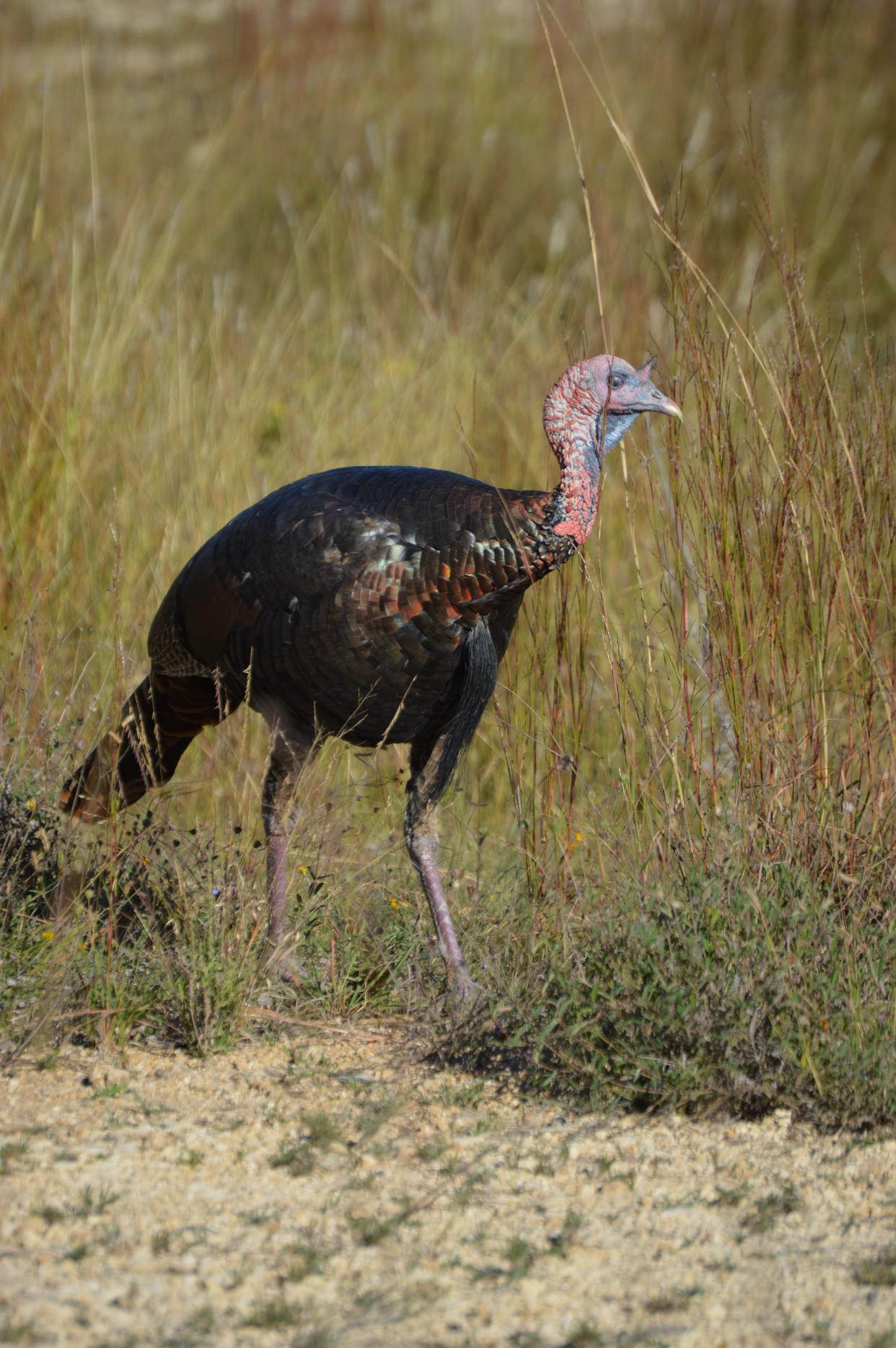Another hunt, another weekend when Hill Country spring turkeys win again | Leggett

CAMP VERDE — Killis LaGrone was 30 yards away, across a cattle guard, tiptoeing toward a clump of juniper that stuck out into the road. That’s where he was headed because I had done something I knew wasn’t smart and that no good would come from it.
It was the final morning of a spring turkey hunt, and I really wanted Killis to get a turkey. It had been close on to 40 years since I called up a turkey for him on the South Fork Ranch west of Kerrville.
“That’s the last turkey I killed,” he’d told me over beers the night before.
Killis grew up in Deadwood in deep East Texas, and there were no turkeys there in those days. I had gotten him to come down from Panola County, where he still lives, thinking in my dull brain that early to mid-April would be the perfect time for gobblers to be running to a call on Camp Verde Ranch.
Years ago, a friend and I had spent enough Aprils hunting turkeys down there to determine that April 20 was the perfect time to start our hunt. That worked well for two decades, but somewhere in there the turkeys changed what they were doing.
Mid-April became the best time for peak gobbling, and I had learned that during the last two seasons while hunting there with Maurice Estlinbaum. Maurice, still going hard at 83, had actually killed two random turkeys in 2023, but there wasn’t much gobbling. By the time we arrived at the ranch, hens were bred and the gobblers had shut down.
A slow start to a slow weekend for gobblers
There were very few gobbles on the roost, and we weren’t hearing anything after 7 a.m. Killis and I tried setting up before daylight close to a roost down along Verde Creek. We had seen three mature gobblers heading down that way just before dark the afternoon before and were kind of stunned that the gobbling quit as soon the first bird hit the ground.
We tried walking the roads, listening and calling, to find a gobbler to hunt. Maurice set up in a horse trap near the house and killed a gobbler the second afternoon. The bird came to the call off a large mountain to the west. By sheer determination Maurice managed to find another gobbler the very next morning.
Out of desperation, I made a loop off through the ranch and to the fence separating that trap from the rest of the ranch. We had turkeys calling and answering our calls from daylight the next day.
Two gobblers came down through a thick stand of junipers to a spot they figured was good for them to attract a hen. We could see them through the brush where we were hiding, but they refused to close the 75 yards between us. They strutted and gobbled for a long time but would not come on in — a sure sign that those gobblers were done for the season.
Needing a change in strategy
After half an hour, I gave up on moving them close and suggested that Killis sneak up the road to a point where he could step around the junipers and whack one of the gobblers as he strutted in the road. In the background, I could hear gobblers answering every yelp I made. He was coming kind of fast, and I didn’t pick up on what was happening.
Finally, I realized the gobbler behind me was coming right to us and had been for 10 minutes. I tried to hiss a message to Killis, but it turned out to be too late. My fuzzy brain could not connect the dots from us to the fast-closing gobbler.
Finally I stood and tried to get Killis’ attention, but to no avail. I knew by the sound that the gobbler to the south of us was close, and I turned to check him out. He was just stepping out from behind a clump of brush, and we locked eyes across 75 yards of open ground.
I didn’t even carry a shotgun that morning, and it was a classic case of trying to pretend that we didn’t see each other. I dropped to a knee while the one gobbler that had come to the call all week turned his head and disappeared back behind the brush.
Killis finally turned back toward me, and I signaled him to return. He made it as the close gobbler crossed through a fence and went invisible. He never called again, either.
I always say that I don’t want to turkey hunt with anybody who’s not smarter than a turkey, but I realize I’d been doing that already for many years. Only the pea brain in this case was little old me.
Killis went home without a turkey and promised we would come back in a year, but in early April. If we’re still alive, of course.
This article originally appeared on Austin American-Statesman: Hunting for spring turkeys in Texas Hill Country remains a challenge
